Holy Week in Seville is one of the biggest events in the city – and one of the most shocking for visitors. Yet Semana Santa, as its known locally, also offers the chance to get under the skin of this southern Spanish city. Here’s how – and why you should bother.
Get your free Seville checklist here.
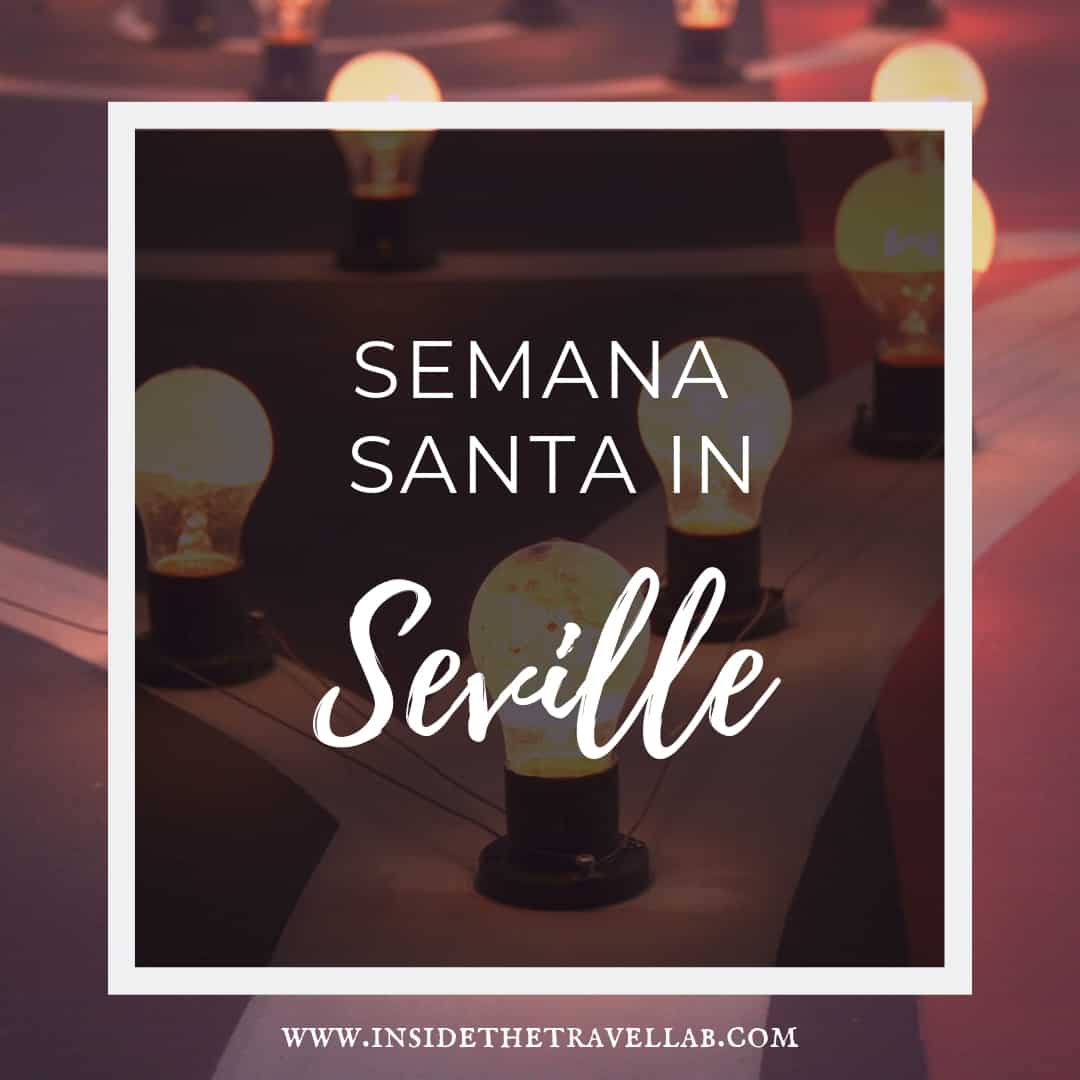
Semana Santa in Seville
Holy Week in Seville (Semana Santa) marks one of the most important events in the year in this part of Andalusia. What began as a religious festival has grown to encompass the whole city, with even the schools and metro systems adjusting accordingly. Witnessing what happens during Holy Week in Seville will remain with you long after locals swap the incense and swishing robes for polka dot dresses and dancing in the following festival Feria de Abril.
Here’s what Semana Santa in Seville is like. And how, as a visitor, you can join in.
Original article published in 2009. For up to date information about the Semana Santa schedule, head here. This will help you find details about the Semana Santa processions and routes including for Palm Sunday, Holy Thursday, Good Friday and Easter Sunday. It should also help with food, times, tours, official routes and other aspects of Spanish culture.
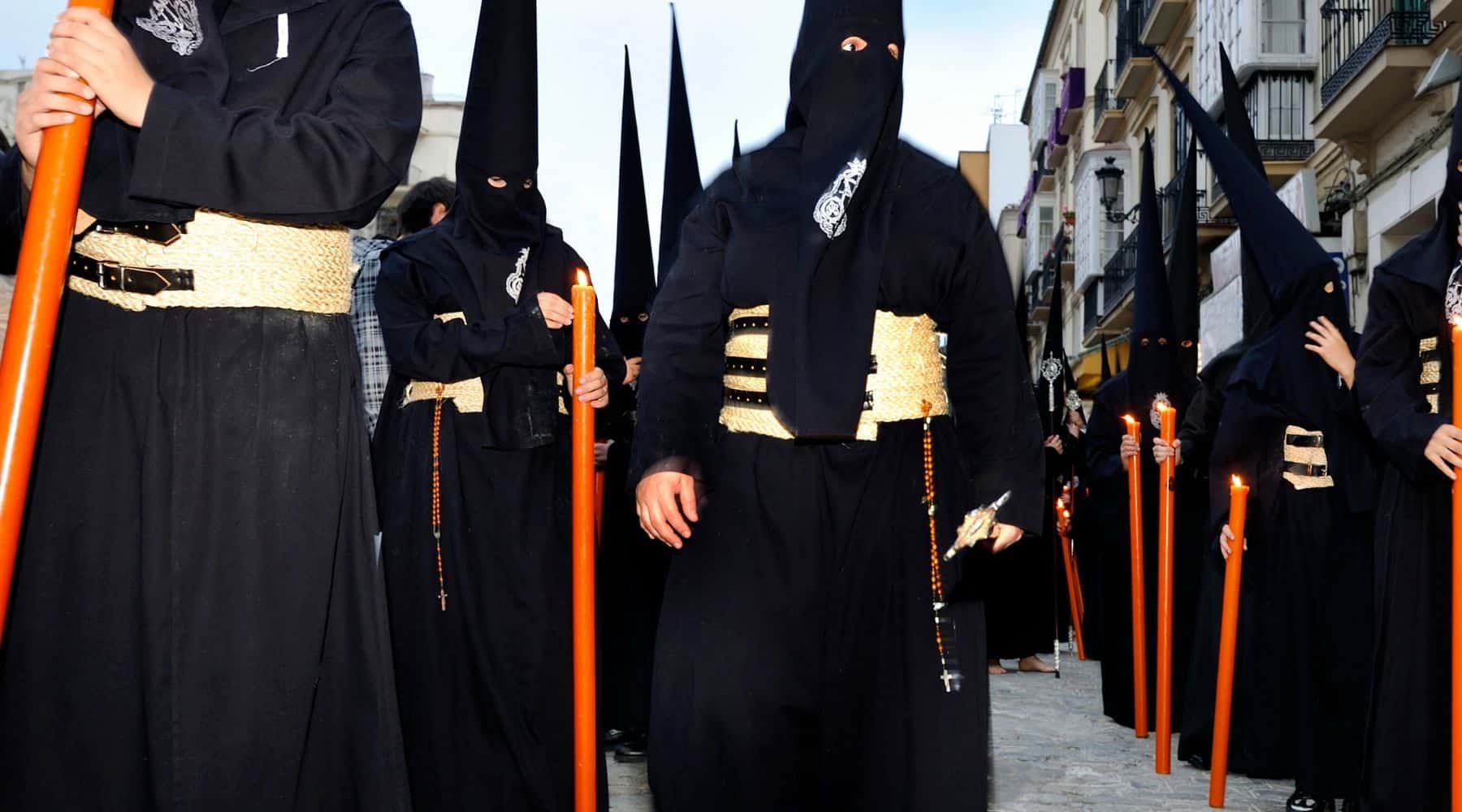
Holy Week in Seville
On a spring afternoon, with sunshine filtering through orange blossom, I saw my first one. Looming tall and dressed entirely in black, the hood masked his face before rising upwards to a point above his head. Gloves concealed his hands, the dark robe flowed and two, blinking eyes watched me.
Semana Santa, or Holy Week in Seville, arrived here this week and this nazareno was on his way to one of the local brotherhoods.
But let’s cut to the chase: those outfits seem terrifying. At least, they do to those of us more familiar with the Ku Klux Klan, fear and fire in America.
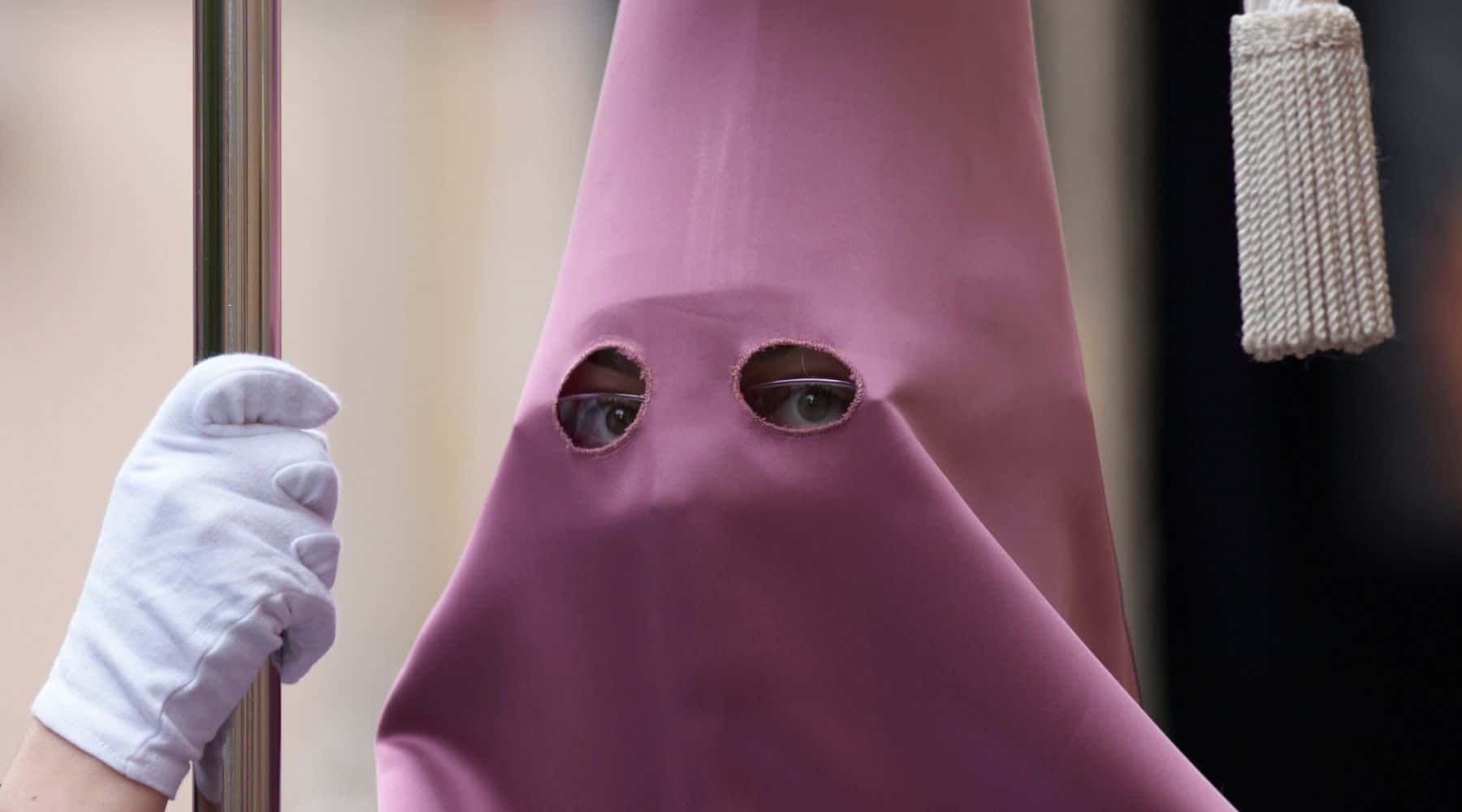
Why do People Wear Ku Klux Klan Outfits During Holy Week?
What they actually represent are the entirely benign and harmless costumes of the religious brotherhoods in Seville. In this case, El Silencio.
As my Spanish friend put it, “It is not really fair. We were first.”
The intimidation faded, however, when the next nazareno I saw, in white and violet, smacked the point of his hood into an overhanging orange branch. After that, I watched unsteady columns of children rehearse for the big event – and found a crestfallen nazarenito with his mother in the toilets, complete with a soiled ceremonial gown.
Each brotherhood, or cofradía, has its own combination of colours, embroidered motif and pre-planned procession route entered into a municipal database. This year you can download the programme straight to your mobile phone, complete with the football fixtures and calendar for the bullfighting season.
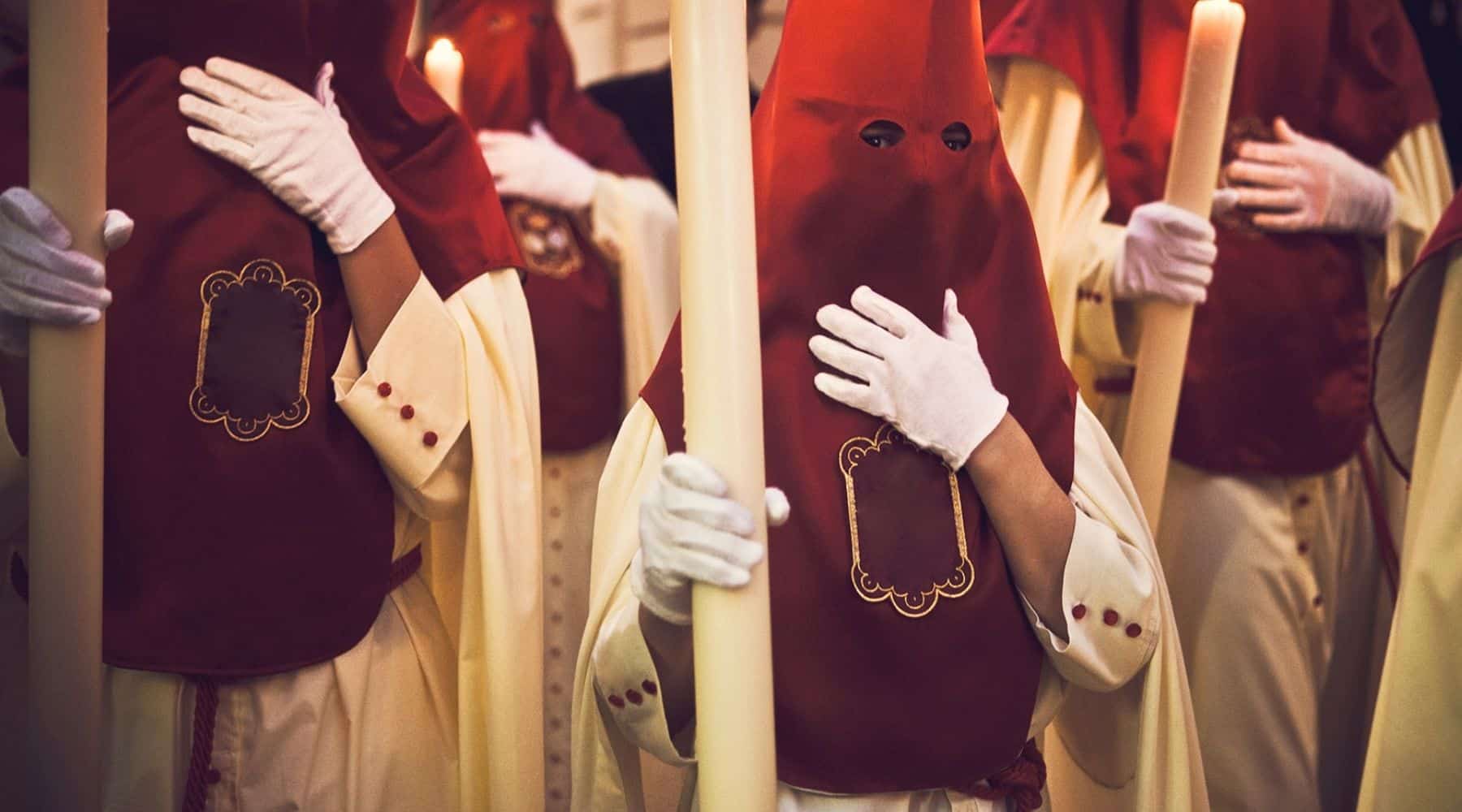
What Locals Think About Holy Week in Seville
Semana Santa may lack the controversy of the blood of the bullring, but not everyone in Seville is a fan. Some object on secular grounds, some associate the festival with certain political views, others just wish for more peace and quiet.
“Every night,” one resident told me in confidence. “The bands play until two or three in the morning. Every night.”
On Jueves Santo, Maundy Thursday, the nazarenos stride on until dawn and beyond and it’s this Madrugada that dazzles the most. Rows upon rows of folded wooden chairs stretch back from the cathedral into the cobbled side streets, with entrance points guarded by security and the police.
On the outskirts, Puerta Jerez is alight with candy floss stalls and ice cream and the processions distribute sweets wrapped in shiny gold paper and the image of a crying virgin.
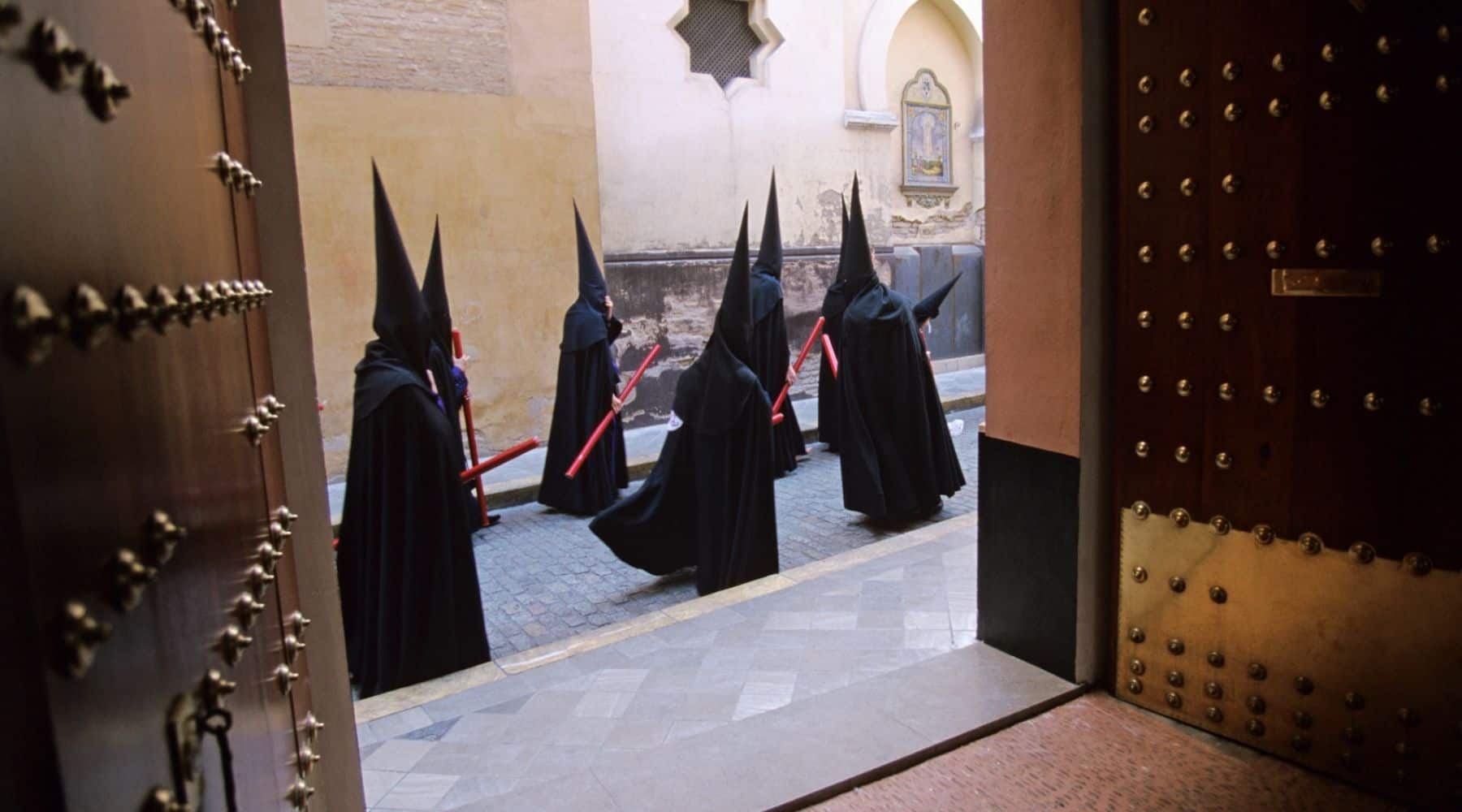
The Serious Side of Holy Week in Seville
Closer to La Giralda, however, the mood becomes sombre. Elegant women wearing black lace veils and killer heels hold the hands of children with parted hair and velvet breeches. As darkness falls, stooped pilgrims file past, silent and barefoot, carrying huge wooden crosses.
It’s in these moments of quiet that the mechanics of the pasos, the floats, become clear. Generations have cherished these life-size figures of Christ and the Virgin Mary and this week, decked in silver and gold, they creak and shudder through Seville on the shoulders of invisible men.
A suited director coordinates the team, issuing instructions through the camouflaged grating on the base of the float. Unlike the others, these men wear casual clothes and a headdress that resembles a cross between a turban and a croissant-shaped cushion.
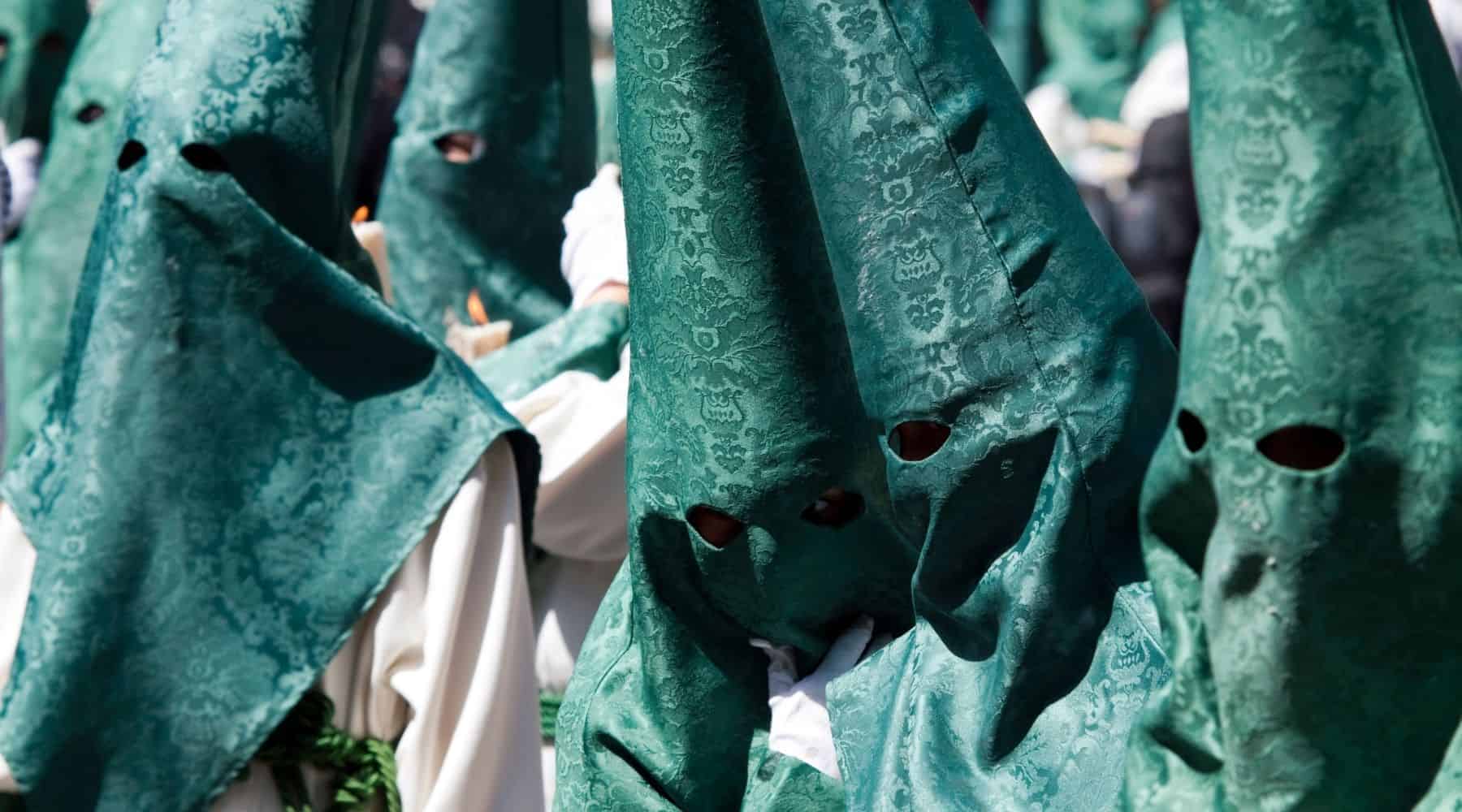
As with everything, Seville’s Semana Santa has its own star turns and they include El Silencio and Gran Poder, with crowds of people running through the streets in order to catch the procession at the next viewing point. Then there’s the Macarena that begins at midnight and continues until the following afternoon.
By three in the morning, however, I am exhausted. Luckily the metro is open all night to take me home. If you haven’t guessed it yet, Seville takes Semana Santa quite seriously.
More on Travel in Seville
- What are the best things to do in Seville?
- Where to stay in Seville
- What to do in Triana, Seville
- What to buy in Seville
- What does No8Do mean in Seville?
- The best tapas bars in Seville
- How to get off the beaten path in Seville
- The perfect driving itinerary for southern Spain
- How to pronounce Seville the right way
- The best food markets in Seville
Plus, get your free Seville checklist here.
